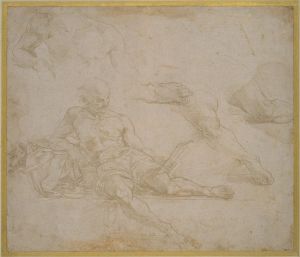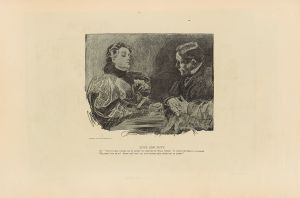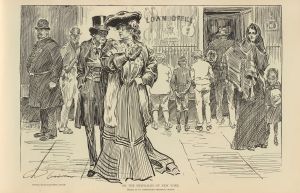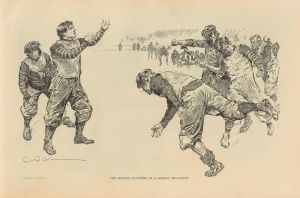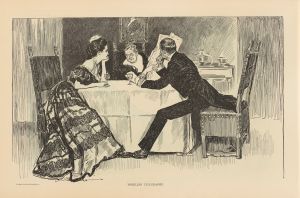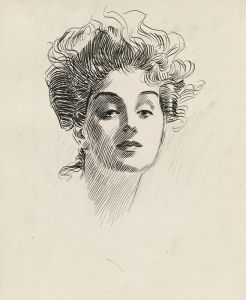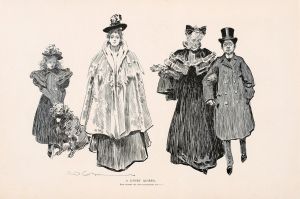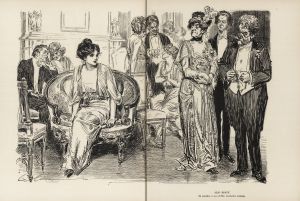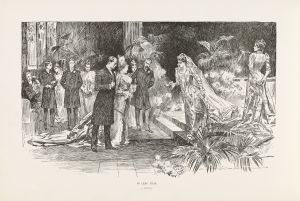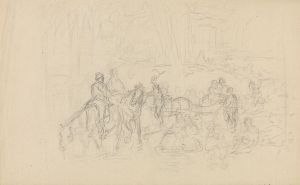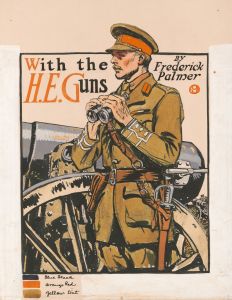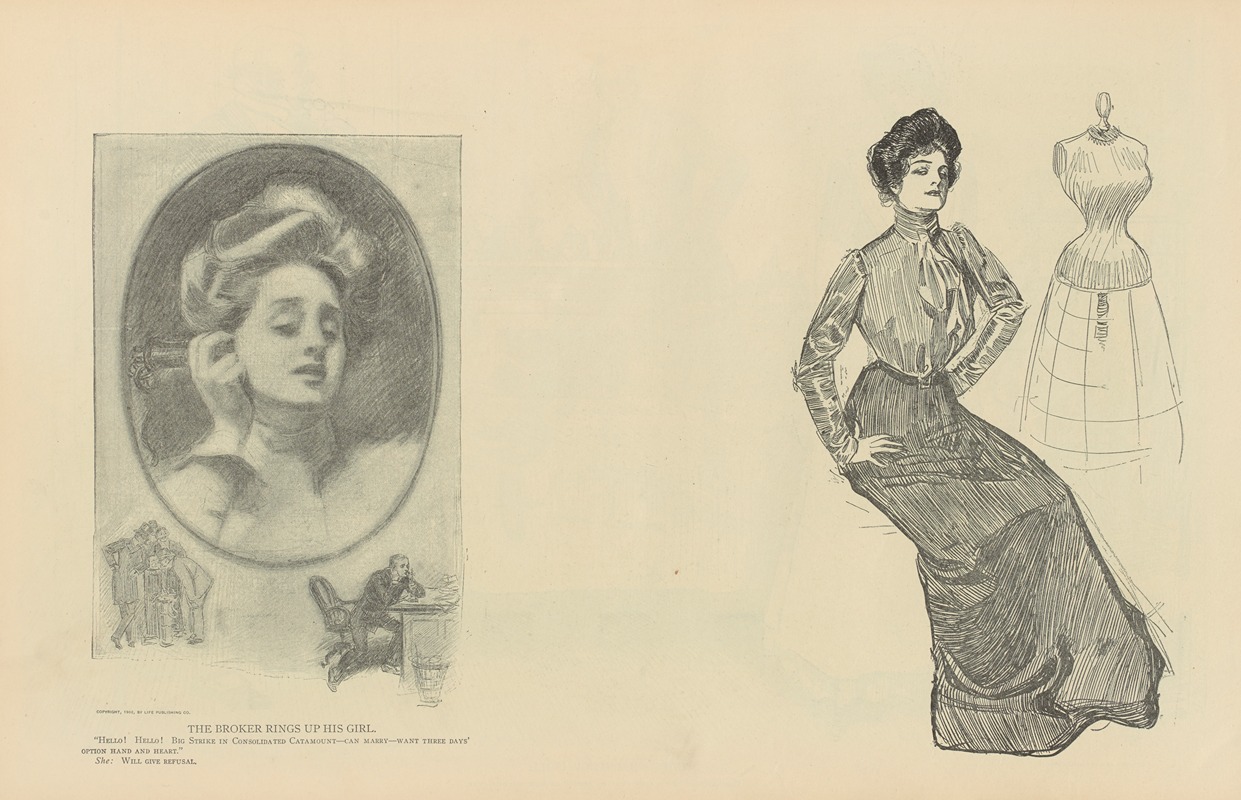
The broker rings up his girl
A hand-painted replica of Charles Dana Gibson’s masterpiece The broker rings up his girl, meticulously crafted by professional artists to capture the true essence of the original. Each piece is created with museum-quality canvas and rare mineral pigments, carefully painted by experienced artists with delicate brushstrokes and rich, layered colors to perfectly recreate the texture of the original artwork. Unlike machine-printed reproductions, this hand-painted version brings the painting to life, infused with the artist’s emotions and skill in every stroke. Whether for personal collection or home decoration, it instantly elevates the artistic atmosphere of any space.
"The Broker Rings Up His Girl" is an illustration by the renowned American artist Charles Dana Gibson, created in the early 20th century. Charles Dana Gibson, born on September 14, 1867, in Roxbury, Massachusetts, was a prominent illustrator best known for his creation of the "Gibson Girl," an iconic representation of the American woman during the late 19th and early 20th centuries. His work was widely published in magazines such as Life, Harper's Weekly, and Scribner's, making him one of the most influential illustrators of his time.
The illustration "The Broker Rings Up His Girl" captures a moment that reflects both the social and technological changes of the era. The scene typically depicts a well-dressed man, presumably a stockbroker, using a telephone to call his romantic interest. This image is significant as it highlights the increasing role of technology in everyday life, particularly the telephone, which was becoming more common in households and businesses during this period. The telephone revolutionized communication, allowing people to connect over long distances instantly, which was a novel concept at the time.
Gibson's work often included social commentary, and this illustration is no exception. It subtly critiques the fast-paced, business-oriented lifestyle of the early 20th century, juxtaposing it with personal relationships and the leisurely pursuits of the upper class. The attire and setting in the illustration suggest a level of affluence, characteristic of Gibson's subjects, who were often depicted as part of the upper echelons of society.
The "Gibson Girl" aesthetic, which Gibson popularized, is evident in the female figure's portrayal. The Gibson Girl was characterized by her beauty, independence, and confidence, often depicted with an hourglass figure, upswept hair, and fashionable clothing. This idealized image of womanhood became a cultural phenomenon and influenced fashion and societal norms of the time.
Gibson's illustrations, including "The Broker Rings Up His Girl," played a significant role in shaping public perceptions of gender roles and social dynamics during the Progressive Era. His work is noted for its detailed linework and ability to capture the nuances of human expression and interaction.
While specific details about the publication and reception of "The Broker Rings Up His Girl" are limited, it remains a part of Gibson's broader body of work that continues to be studied for its artistic merit and cultural significance. Charles Dana Gibson's legacy endures through his contributions to illustration and his impact on American visual culture, with his works housed in various collections and museums.





